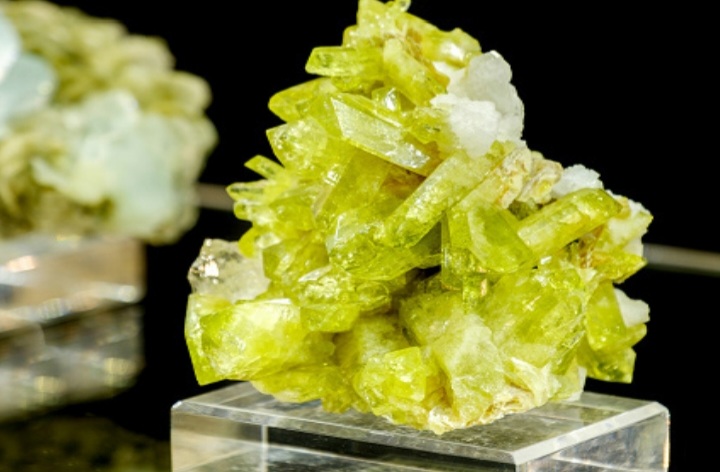Earth Treasures: Brazilianite

By Chisom Ibemere
Brazilianite is a phosphate mineral whose name is gotten from its country of origin, Brazil. It is a typically yellow-green mineral which is commonly found in phosphate-rich pegmatites. Its lovely colours make it a target for gem collectors. Large faceted stones are often flawed, but smaller ones can be cut to beautiful jewellery pieces.
Brazilianite was discovered in 1944 and large uncut stones reside in many museums. Pieces such as these could yield large gems, but clean faceted gems over 15 carats are a great rarity. They are also used in producing stunning crystal specimens.
Crystals of Brazilianite has range of sizes and some of the large gems have been cut, most gems range from 1-10 carats, or even smaller while cut stones over 5 carats are rare.
Brazilianite is hydrous sodium aluminum phosphate mineral specie. Its discovery in 1944 was thought to be chrysoberyl, until 1945 that it was identified by Frederick H. Pough and Edward P. Henderson as a new mineral and named after its country of discovery.
It belongs to phosphate group, and is considered more precious than some other phosphate mineral like the apatite. Brazilianite is a phosphate mix of sodium and aluminium and considered to be one of the hardest phosphate minerals, with rating of 5.5 on the hardness scale. It has a vitreous lustre and can be transparent to translucent with a weak pleochroism.
Brazilianite occurs in phosphate rich pegmatites. It has long and pointed or short and columnar Crystals. It has association with minerals like mica, quartz, feldspar, muscovite, beryl, apatite, and tourmaline. As a new gemstone, it is highly prized, but too new to be popular globally.
